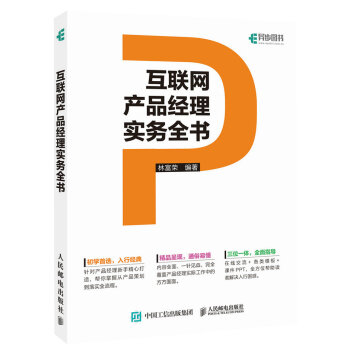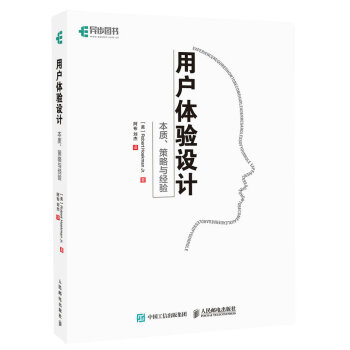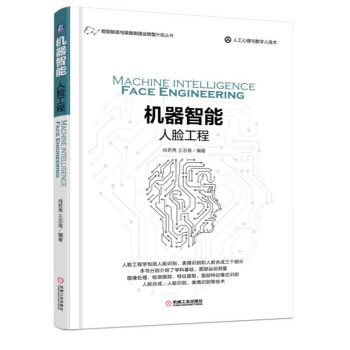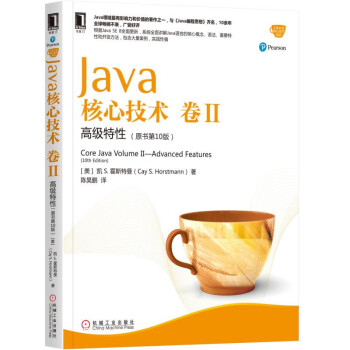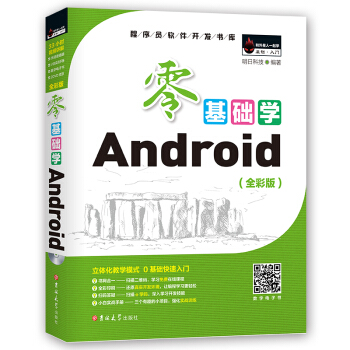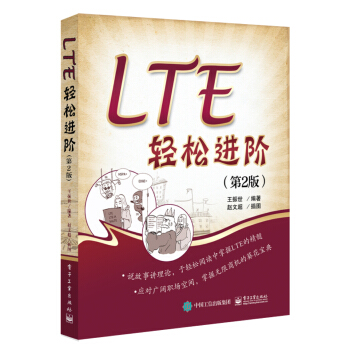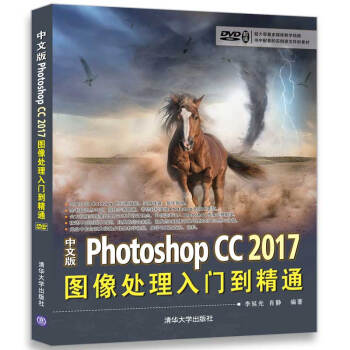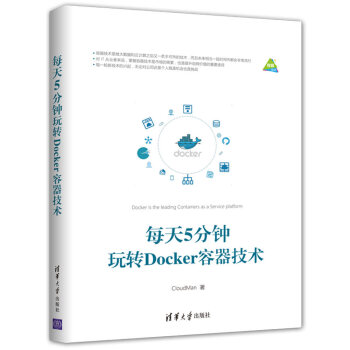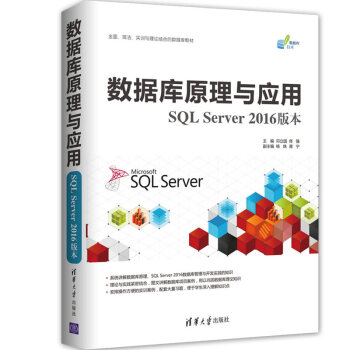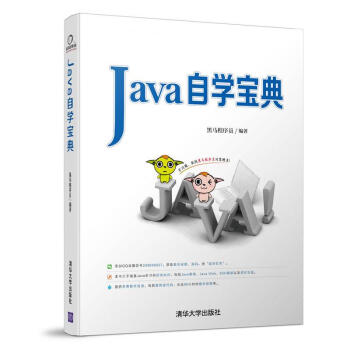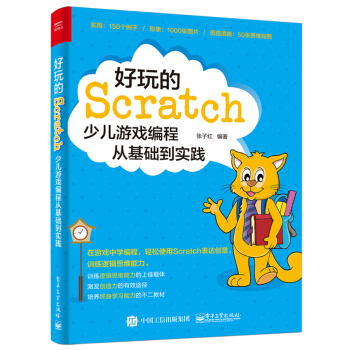

具体描述
内容简介
准备好完成从新手到Python专家的历练了吗?《Python漫游指南(影印版 英文版)》给出了来自Python社区的实践和第1选择工具的内行指南,可以帮助那些希望向开源社区贡献力量或是想基于Python技术创业的中级程序员更上一层楼,迈入Python高手的殿堂。
《Python漫游指南(影印版 英文版)》包括三个不同的部分,汇集了超过百名Python社区成员的成果。首先,你将学习到如何设置、使用Python编辑工具;然后,将深入研究具有Python风格的代表性代码样例;最后,将探索Python社区常用的代码库。
内页插图
目录
PrefacePart I. Getting Started
1. Picking an Interpreter
The State of Python 2 Versus Python 3
Recommendations
So...3?
Implementations
CPython
Stackless
PyPy
Jython
IronPython
PythonNet
Skulpt
MicroPython
2. Properly Installing Python
Installing Python on Mac OS X
Setuptools and pip
virtualenv
Installing Python on Linux
Setuptools and pip
Development Tools
virtualenv
Installing Python on Windows
Setuptools and pip
virtualenv
Commercial Python Redistributions
3. Your Development Environment
Text Editors
Sublime Text
Vim
Emacs
TextMate
Atom
Code
IDEs
PyCharm/Intellij IDEA
Aptana Studio 3/Eclipse + LiClipse + PyDev
WingIDE
Spyder
NIN]A-IDE
Komodo IDE
Eric (the Eric Python IDE)
Visual Studio
Enhanced Interactive Tools
IDLE
IPython
bpython
Isolation Tools
Virtual Environments
pyenv
Autoenv
virtualenvwrapper
Buildout
Conda
Docker
Part II. Getting Down to Business
4. Writing Great Code
Code Style
PEP 8
PEP 20 (a.k.a. The Zen of Python)
General Advice
Conventions
Idioms
Common Gotchas
Structuring Your Project
Modules
Packages
Object-Oriented Programming
Decorators
Dynamic Typing
Mutable and Immutable Types
Vendorizing Dependencies
Testing Your Code
Testing Basics
Examples
Other Popular Tools
Documentation
Project Documentation
Project Publication
Docstring Versus Block Comments
Logging
Logging in a Library
Logging in an Application
Choosing a License
Upstream Licenses
Options
Licensing Resources
5. Reading Great Code
Common Features
HowDoI
Reading a Single-File Script
Structure Examples from HowDoI
Style Examples from HowDoI
Diamond
Reading a Larger Application
Structure Examples from Diamond
Style Examples from Diamond
Tablib
Reading a Small Library
Structure Examples from Tablib
Style Examples from Tablib
Requests
Reading a Larger Library
Structure Examples from Requests
Style Examples from Requests
Werkzeug
Reading Code in a Toolkit
Style Examples from Werkzeug
Structure Examples from Werkzeug
Flask
Reading Code in a Framework
Style Examples from Flask
Structure Examples from Flask
6. Shipping Great Code
Useful Vocabulary and Concepts
Packaging Your Code
Conda
VyPI
Freezing Your Code
PyInstaller
cx_Freeze
py2app
py2exe
bbFreeze
Packaging for Linux-Built Distributions
Executable ZIP Files
PartIII. Scenario Guide
7. User Interaction
Iupyter Notebooks
Command-Line Applications
GUI Applications
Widget Libraries
Game Development
Web Applications
Web Frameworks/Microframeworks
Web Template Engines
Web Deployment
8. Code Management and Improvement
Continuous Integration
System Administration
Server Automation
System and Task Monitoring
Speed
Interfacing with C/C++/FORTRAN Libraries
9. Software interfaces
Web Clients
Web APIs
Data Serialization
Distributed Systems
Networking
Cryptography
10. Data Manipulation
Scientific Applications
Text Manipulation and Text Mining
String Tools in Pythons Standard Library
Image Manipulation
11. Data Persistence
Structured Files
Database Libraries
A. Additional Notes
Index
前言/序言
Python is big. Really big. You just won't believe how vastly hugely mind-bogglingly big it is.This guide is not intended to teach you the Python language (we ate lots of great resources that do that) but is rather an (opinionated) insider's guide to our community's favorite tools and best practices. The primary audience is new to mid-level Python programmers who are interested in contributing to open source or in beginning a career or starting a company using Python, although casual Python users should also find Part I and Chapter 5 helpful.
The first part will help you choose the text editor or interactive development environment that fits your situation (for example, those using Java frequently may prefer Eclipse with a Python plug-in) and surveys options for other interpreters that may meet needs you don't yet know Python c7ould address (e.g., there's a MicroPython implementation based around the ARM Cortex-M4 chip). The second section demonstrates Pythonic style by highlighting exemplary code in the open source community that w~l hopefully encourage more in-depth reading and experimentation with open source code. The final section briefly surveys the vast galaxy oflibraries most commonly used in the Python community-providing an idea of the scope of what
Python can do right now. All of the royalties from the print version of this book will be directly donated to the Django GirlsY (https://djangogirls.org/), a giddily joyous global organization dedicated to organizing free Django and Python workshops, creating open-sourced online tutorials, and curating amazing first experiences with technology Those who wish to contribute to the online version can read more about how to do it at our website (http://docs.python-guide.org/en/latest/notes/contribute/).
用户评价
这本《Python漫游指南(影印版 英文版)》在我桌上已经静置了一段时间,直到最近我才下定决心翻开它。坦白说,一开始我对“漫游”这个词有点犹豫,担心它是否意味着内容会比较零散,或者缺乏系统性。然而,事实证明我的顾虑是多余的。书的开篇就以一种非常引人入胜的方式,将我带入了Python的世界。作者并没有一开始就抛出复杂的概念,而是从最基础的语法和数据结构入手,用一种极其平易近人的语言进行解释。我尤其喜欢它在介绍变量和数据类型时,所使用的比喻和例子,它们生动形象,让我能够迅速理解抽象的概念。 在后续的章节中,这本书展现了它强大的组织能力。它并没有生硬地将各种功能堆砌在一起,而是循序渐进地引导读者去探索Python的强大之处。比如,当介绍到函数时,它不仅解释了函数的作用,还深入探讨了参数传递、作用域等关键概念,并且通过一系列精心设计的练习题,让我能够立即动手实践,巩固所学。我惊喜地发现,许多在其他书籍中可能被视为难点的内容,在这本书里都变得异常清晰。即使我偶尔遇到一些自己不熟悉的模块或库,作者也能通过其独特的视角,为我提供一个清晰的入口,让我不会感到迷失。 这本书的另一大亮点在于其深度和广度。它不仅仅停留在基础教学层面,而是触及了许多Python编程中更高级的主题。例如,在讨论对象导向编程(OOP)时,作者并没有止步于类和对象的定义,而是深入剖析了继承、多态、封装等核心原则,并提供了富有启发性的代码示例,让我能真正理解这些概念在实际应用中的价值。此外,书中还涉及了一些数据分析和网络编程的基础知识,虽然篇幅不至于过长,但足以让我对这些领域有一个初步的认识,并激起我进一步深入学习的兴趣。 我最欣赏的是本书在代码示例方面的处理。它不像很多技术书籍那样,仅仅提供冰冷的、孤立的代码片段。相反,每一个示例都紧密地结合了前文的讲解,并且通常会附带清晰的解释,说明代码的逻辑和预期结果。更重要的是,这些示例往往具有一定的实用性,能够让我看到Python在解决实际问题时的强大能力。我经常会在阅读完一个章节后,尝试修改和扩展书中的示例,这种互动式的学习方式极大地提升了我的学习效率和乐趣,让我感觉自己不仅仅是在被动地接收信息,而是在积极地参与到编程的过程中。 总而言之,《Python漫游指南(影印版 英文版)》对我来说是一次非常愉快的学习体验。它以其清晰的结构、生动的讲解、丰富的示例以及对初学者友好的态度,成功地吸引了我,并引导我一步步深入Python的世界。这本书不仅仅是一本教材,更像是一位耐心而博学的向导,带领我在Python的广阔领域中“漫游”。即便我自认为已经对Python有了一定的了解,但在阅读此书的过程中,我仍然学到了许多新的技巧和更深层次的理解。我强烈推荐这本书给任何想要学习Python,或者希望巩固和提升Python技能的读者。
评分当我拿到这本《Python漫游指南(影印版 英文版)》时,首先映入眼帘的是其简洁而专业的封面设计。翻开书页,我便被其内容所吸引,这并非一本枯燥乏味的语法手册,而是一次深入Python世界的探索之旅。作者以一种非常人性化的方式,将Python的精髓展现在我面前,从最基本的代码构建模块,到那些能够让程序变得更加优雅和高效的“魔法”。 本书在讲解过程中,非常注重逻辑的连贯性和循序渐进。它不会突然抛出大量信息,而是将复杂的概念分解成小块,逐步引导读者理解。例如,在介绍数据结构时,它不仅仅讲解了列表(list)、元组(tuple)、字典(dictionary)和集合(set)的基本用法,还深入探讨了它们在不同场景下的优缺点,以及如何选择最合适的数据结构来优化性能。这种细致入微的讲解,让我能够真正理解“为什么”要使用某个特定的数据结构,而不是仅仅记住它的语法。 我特别欣赏这本书中大量的实战型代码示例。这些示例并非为了展示而展示,而是紧密围绕着讲解的知识点,并且通常会伴随着清晰的注释和解释。这使得我能够非常轻松地理解代码的逻辑,并从中学习到实际的编程技巧。当我遇到书中提到的某个模块或库时,它总会提供一个简明扼要的介绍,并给出一个可以运行的示例,这极大地缩短了我学习新知识的门槛。 更令我惊喜的是,这本书并没有回避Python的一些进阶主题。即使是像“闭包”(closures)或“装饰器”(decorators)这样可能让初学者望而生畏的概念,作者也用非常生动和直观的方式进行了讲解,并提供了非常实用的代码示例,让我能够理解它们在实际开发中的应用场景。这种勇于触及核心难点的态度,让这本书的价值倍增,使其不仅仅停留在入门级别。 总的来说,《Python漫游指南(影印版 英文版)》是一本真正能够帮助读者掌握Python编程的书籍。它以其清晰的讲解、丰富的示例、严谨的逻辑以及对初学者友好的态度,让我对Python有了更深刻的认识。阅读此书的过程,就像是在一位经验丰富的向导的带领下,在Python的海洋中进行一次充满收获的“漫游”,我从中不仅学到了技术,更体会到了编程的乐趣。
评分拿到《Python漫游指南(影印版 英文版)》后,我并没有急于立刻阅读,而是先翻阅了一下目录和前言。令我欣喜的是,这本书的结构非常清晰,从最基础的安装和环境配置,到数据类型、控制流、函数,再到面向对象编程和一些进阶主题,都安排得井井有条。这种系统性的组织,让我对学习路径有了一个明确的认识,打消了我对“漫游”可能带来的零散担忧。 在阅读正文部分,我被作者的写作风格深深吸引。它没有采用那种枯燥乏味的“教科书式”语言,而是用一种更加轻松、更具启发性的方式来讲解Python。我尤其喜欢它在介绍编程概念时,所使用的类比和故事。例如,在讲解循环时,它会用一个生动的故事来描述重复执行某个动作的过程,这让我能够更容易地理解循环的逻辑,并将其与实际生活中的场景联系起来。 本书在代码示例方面,也展现出了极高的水准。每一个示例都经过精心设计,能够准确地演示所讲解的概念,并且代码本身也写得非常简洁、易读。更让我赞赏的是,书中对每一个代码示例都进行了详细的解释,不仅仅是告诉读者“代码能做什么”,更是深入分析了“代码为什么能这样做”。这种细致的讲解,让我能够真正理解代码背后的原理,而不是简单地复制粘贴。 此外,《Python漫游指南(影印版 英文版)》还对一些Python的常用库和模块进行了介绍,例如NumPy和Pandas。虽然篇幅可能不长,但它足以让我对这些强大的工具有一个初步的了解,并激起我深入学习它们的兴趣。这种“点到为止”的介绍方式,既不会让初学者感到 overwhelming,又能为他们打开通往更广阔Python世界的大门。 总而言之,这本《Python漫游指南(影印版 英文版)》是一本非常优秀的Python学习书籍。它凭借其清晰的结构、生动的讲解、丰富的代码示例以及对初学者友好的设计,成功地吸引了我,并让我对Python编程有了扎实的掌握。这本书不仅教会了我如何编写Python代码,更重要的是,它让我体会到了编程的乐趣和逻辑思维的魅力,是一次非常值得的“漫游”体验。
评分在众多Python学习资源中,这本《Python漫游指南(影印版 英文版)》以其独特的视角和扎实的讲解脱颖而出。当我第一次接触到它时,就被它封面设计所吸引,但真正让我爱不释手的是它内在的深度和条理。作者并非简单地罗列语法规则,而是将Python的各个方面娓娓道来,仿佛在讲述一个引人入胜的故事。从最基本的“Hello, World!”到复杂的算法设计,每一个环节都衔接得恰到好处,让人在不知不觉中就完成了知识的进阶。 本书在内容组织上,着实花费了心思。它并没有遵循传统的“先理论后实践”的模式,而是巧妙地将理论知识与实际应用紧密结合。例如,在讲解列表(list)和元组(tuple)时,作者会立即给出一些实际场景的应用案例,比如如何用列表存储购物清单,或者如何用元组存储不可变的数据。这种“即学即用”的学习方式,极大地提高了我的学习效率,也让我能更直观地感受到Python的实用性。而且,每当引入一个新的概念,书中总会提供相应的代码片段,并附有详尽的解释,让我能够迅速理解其工作原理。 我特别喜欢本书对高级主题的处理方式。对于像装饰器(decorators)、生成器(generators)和上下文管理器(context managers)这类通常被认为是初学者难以掌握的概念,本书的讲解却显得格外清晰易懂。作者通过一系列巧妙的比喻和清晰的代码示例,将这些看似复杂的概念分解成易于理解的部分。我印象深刻的是,书中关于生成器和迭代器的讲解,它们之间的联系与区别被阐述得淋漓尽致,让我不再感到困惑,而是能够自如地运用它们来优化代码性能。 从编程范式的角度来看,《Python漫游指南(影印版 英文版)》也提供了非常宝贵的见解。它在介绍函数式编程和面向对象编程时,不仅仅停留在表面的语法层面,而是深入探讨了各自的设计哲学和优势。书中提供的代码示例,往往能展现出不同编程范式在解决同一问题时的不同风格和效率,这对于我理解代码的可读性、可维护性和可扩展性,起到了至关重要的作用。这种比较性的讲解,让我能够更全面地认识Python的灵活性,并根据实际需求选择最合适的编程方式。 总而言之,这是一本我非常乐于推荐的学习Python的书籍。它既有 beginner-friendly 的教学风格,又不乏深入的探讨和对高级概念的清晰阐释。这本书的结构清晰,内容翔实,语言流畅,而且代码示例丰富且实用。阅读过程中,我感受到的是一种循序渐进、层层递进的学习体验,而不是生搬硬套的知识灌输。它不仅教会了我如何写Python代码,更让我理解了“为什么”要这样写。
评分当我收到这本《Python漫游指南(影印版 英文版)》时,内心是充满期待的。我一直对Python这门语言充满兴趣,但总觉得缺少一本能够真正引领我入门的书。这本指南,可以说是超出了我的预期。它没有一开始就用晦涩的术语和复杂的代码吓倒我,而是以一种非常平缓的节奏,带我逐步走进Python的世界。 本书的叙事方式非常独特,它并没有采用传统的章节划分,而是将内容组织成一系列相互关联的主题。这种“漫游”式的结构,让我感觉像是与一位经验丰富的导师在进行一对一的交流。作者在讲解每一个概念时,都会用非常形象的比喻和贴近生活的例子,帮助我理解抽象的编程概念。我尤其喜欢它在解释变量和作用域时,所使用的“盒子”和“房间”的比喻,它们瞬间就让我明白了这些概念的本质。 在代码示例方面,《Python漫游指南(影印版 英文版)》做得相当出色。它提供的代码片段简洁明了,而且总是恰好能够验证前面讲解的理论。更重要的是,这些示例都具有一定的可执行性和实用性,让我能够亲手尝试,并从中获得成就感。书中对每个代码块都有详细的注释,解释了每一行代码的作用,这对于我这种初学者来说,简直是福音。 我注意到,本书在讲解过程中,并没有回避Python的一些核心特性。例如,在介绍函数时,它不仅讲解了如何定义和调用函数,还深入探讨了参数的传递方式、默认参数和关键字参数等内容。这些细节的处理,让我能够更全面地理解函数的功能,并写出更加灵活和健壮的代码。即使是像异常处理(exception handling)这样看似专业的话题,书中也给出了非常清晰的解释和实用的示例。 总的来说,这本《Python漫游指南(影印版 英文版)》为我开启了一段精彩的Python学习旅程。它以其独特的讲解方式、丰富的实战案例和对初学者友好的态度,让我能够轻松愉快地掌握Python编程的基础知识。这本书不仅仅是传授知识,更是激发了我对编程的热情,让我对接下来的学习充满信心。
评分这本书看起来还不错,是这么一回事,好好干,会有突破
评分书本身的质量不错,内容对学习有很大的帮助!
评分书看起来,挺不错的样子,还没有细读
评分这本书让我收获很多,一直没弄懂怎样使用async功能,看了这本书感觉茅塞顿开
评分真的是专业必备,值得购买,值得找茬
评分书不便宜了,粗略翻下,内容貌似真是好基础,没有什么实例,都是各种介绍,感觉有点亏了
评分很好,英语不错的非常推荐,很快就明白了。
评分书是经典,还没看,京东服务不错。
评分好书,慢慢啃吧有中文版PDF对照还行
相关图书
本站所有内容均为互联网搜索引擎提供的公开搜索信息,本站不存储任何数据与内容,任何内容与数据均与本站无关,如有需要请联系相关搜索引擎包括但不限于百度,google,bing,sogou 等,本站所有链接都为正版商品购买链接。
© 2025 windowsfront.com All Rights Reserved. 静流书站 版权所有


![理正岩土工程计算分析软件应用:支挡结构设计 [The Application of Leading Software for Geotechnical Engineering Computation and Analysis:Retaining Structures Design] pdf epub mobi 电子书 下载](https://pic.windowsfront.com/12197329/5a5890a8N17354ca6.jpg)

